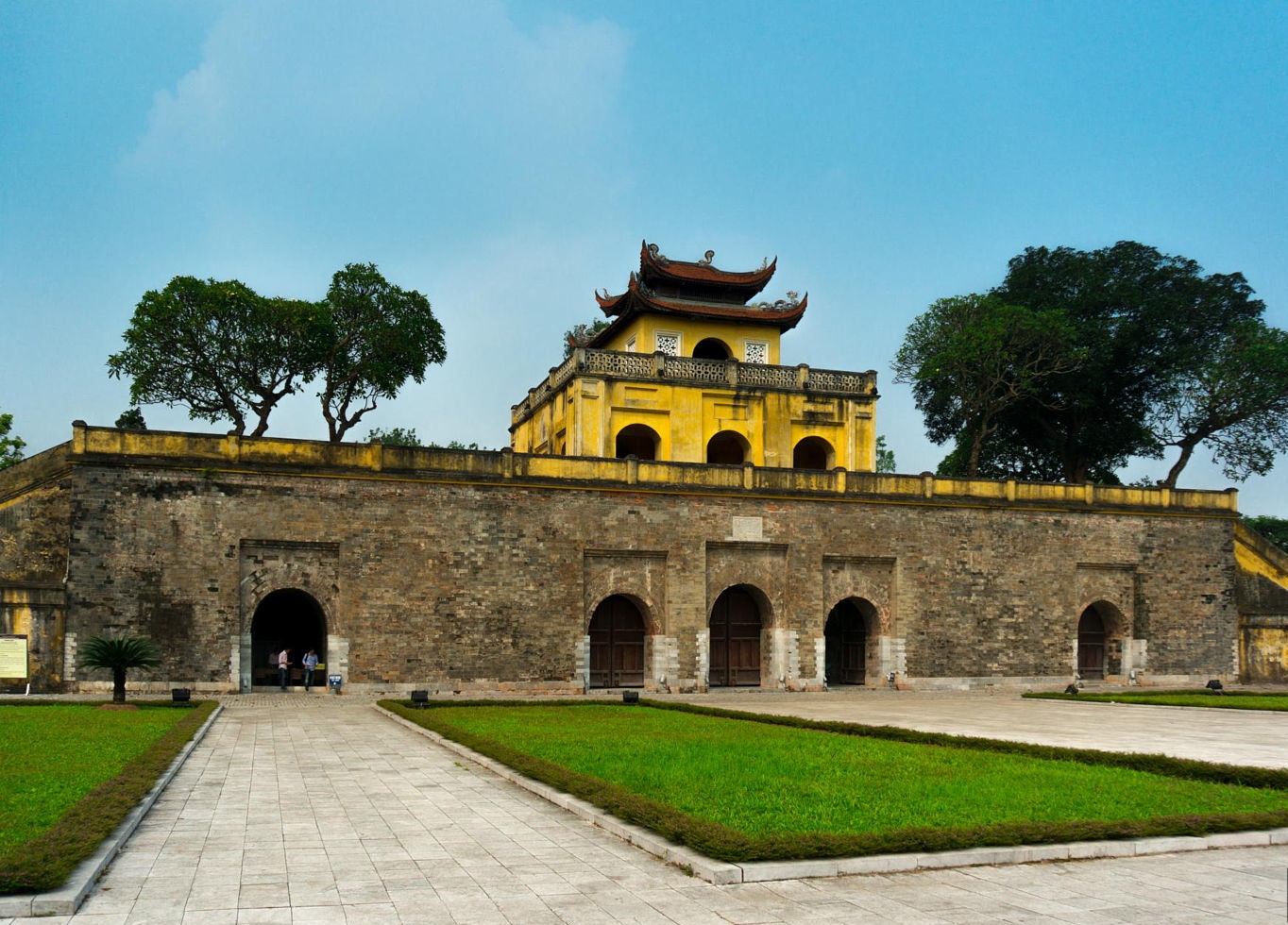
The main part of Imperial Citadel of Thang Long – Hanoi essentially covers a large area of 20 ha consisting archaeological area at 18 Hoang Dieu Street and relics in Hanoi Citadel such as: Bac Mon, Doan Mon, Hau Lau, stone dragons in Kinh Thien Palace, dragon house, house D67 and Ha Noi flag tower. These relics are surrounded by 4 streets: Phan Dinh Phung Street in the north, Dien Bien Phu Street in the south, Nguyen Tri Phuong Street in the east and Hoang Dieu Street in the west.
History of The Imperial Citadel Of Thang Long in Hanoi, Vietnam
In 1009, Ly Dynasty was initially established with the enthroning of King Ly Cong Uan. In July, 1010, the royal decree called Chieu Doi Do was promulgated to change the capital from Hoa Lu (Ninh Binh) to Dai La Citadel. After transferring the capital city, the King commanded to build Citadel of Thang Long and the citadel construction was latterly completed in the early 1011.
Due to its extremely important roles, the ancient Citadel of Thang Long was surrounded by three separate fortresses. The outer fort was Kinh Thanh (Imperial City), where most of citizens lived. Surrounded by the Hong, To Lich and Kim Nguu rivers, Kinh Thanh played an essential role as a dyke system for the capital city. The second fort (the middle ring) was Hoang Thanh (Imperial Citadel), where the royal court, offices and residence of mandarins were located. The smallest and most inner enclosure was Tu Cam Thanh (Forbidden City) where the king, queens and concubines lived in seclusion.
The Citadel of Thang Long was repaired and had many new works in Tran Dynasty and expanded in Le So Dynasty. Being under many renovations and reparations, the Citadel of Thang Long was repaired and expended its mass area in Tran and Le So Dynasties. From 1516 to 1788 in dynasties of Mac and Le Trung Hung, the Citadel of Thang Long was destroyed many times. In early 1789, King Quang Trung transferred the capital city to Phu Xuan, the Citadel of Thang Long only acted as Bac Thanh (the northern defensive fortification). In Nguyen Dynasty, the remainders of the Imperial Citadel of Thang Long were transferred to Phu Xuan for building new citadel. Only Kinh Thien Palace and Hau Lau were retained to be accommodations for Kings Nguyen during their business trips to the Bac Thanh. In 1805, King Gia Long ordered the demolition of walls surrounding the Imperial Citadel of Thang Long and requested the building of a new, smaller citadel called Ha Noi Citadel with architectural style of Vauban (France). In 1831, King Minh Mang changed name of the Citadel of Thang Long to Ha Noi Province in a big administrative reform. When French colonists occupied all Indochina, they chose Ha Noi as the capital of French Indochina Union and the Ha Noi Citadel was destroyed to build military camp for French colonists. Since the Vietnamese army took the control of the capital city in 1954, the Ha Noi Citadel has become the headquarters of the Ministry of Defense. The first value of the central sector of Imperial Citadel of Thang Long – Ha Noi shows that it is nearly a book displaying over 10 century- history of Thang Long – Ha Noi from Dai La Citadel in Pre-Thang Long period to nowadays.

